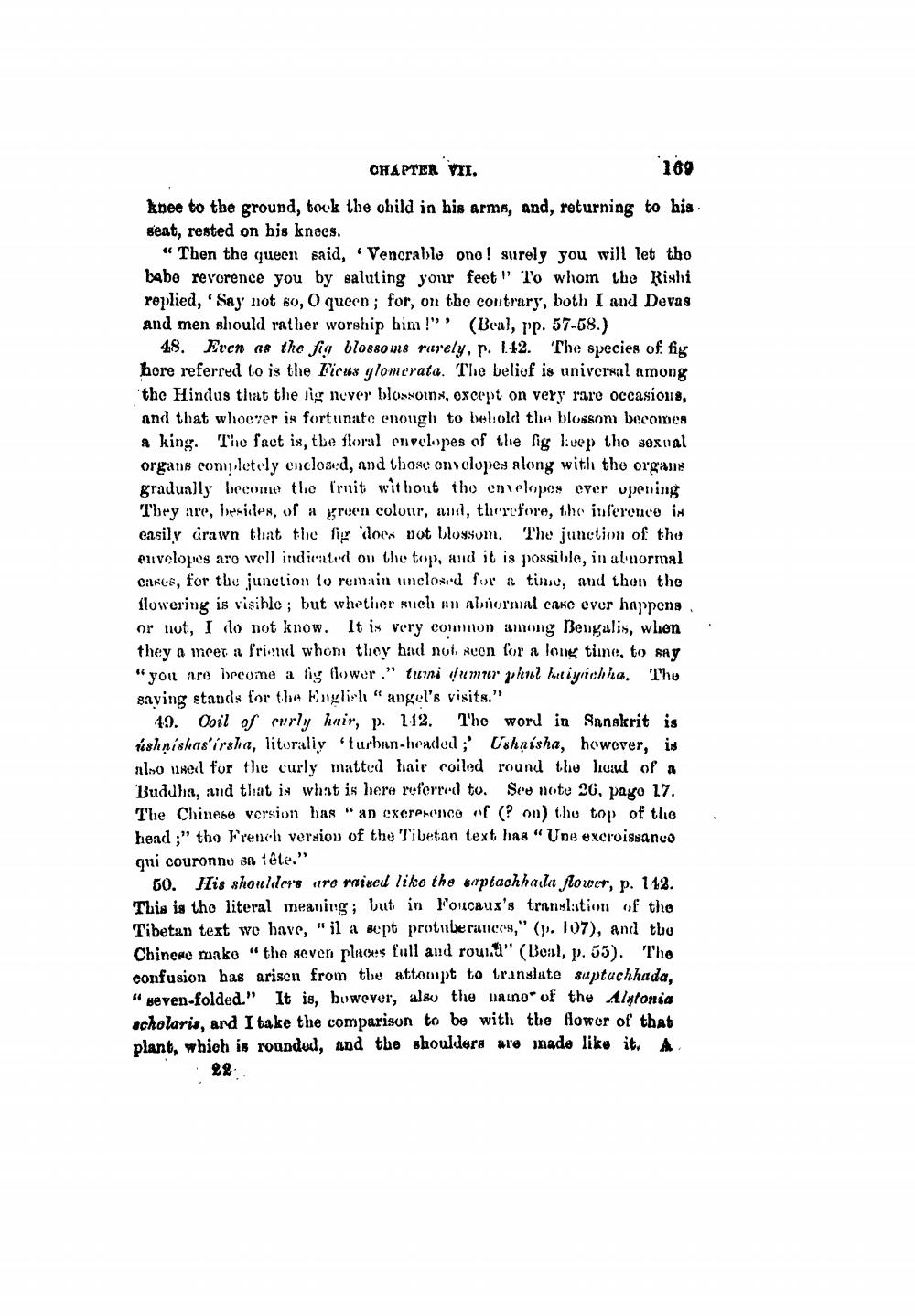________________
OHAPTER VII.
169 knee to the ground, took the child in his arms, and, returning to his geat, rested on his knees.
“ Then the queen said, "Vencrablo ono! surely you will let tho babe revorence you by saluting your feet" To whom the Rishi replied, 'Say not so, o queen; for, on the contrary, both I and Devas and men should rather worship him!" (Beal, pp. 57-68.)
48. Even as the fig blossoms rarely, r. 142. The species of fig here referred to is the Ficus glomerata. The belief is universal among the Hindus that the lig never blossoms, except on very rare occasions, and that whoever is fortunate enough to bel:old the blossom becomes a kiny. The fact is, the floral envelopes of the lig kvep tho sexual organs completely enclosed, and those onvelopes along with the organs gradually become the fruit without the envelopes ever opening They are, lesitles, of a green colour, and, therefore, the inference in easily drawn that the fig does not blossom. The junction of the envelopes aro well indicated on the top, and it is possible, in al normal casts, for the junction to remain unclosed for a tinse, and then the flowering is visible ; but whether such an abnormal cake ever happens or not, I do not know. It is very common among Bengalis, when they a meet a friend whom they had not seen for a long time, to say "you are become a liy flower." tunni d'umour phul huiynichha. Thu saving stands for the English " angel's visits."
49. Coil of curly hair, p. 112. The word in Sanskrit is tishnishes'írsha, literally "turban-headeil ;' Ushạísha, however, is also used for the curly matted hair coiled round the head of a Buddha, and that is what is here referred to. See note 36, payo 17. The Chinese version has an exeresence of (? on the top of the head;" tho French versiou of the Tibetan text has "Une excroissanco qui couronnu sa tête."
50. His shoulders are mixed like the saptachhaila flower, p. 112. This is the literal meaning; but in Foucaux's translation of the Tibetan text we have, "il a sept protuberance," (p. 107), and tho Chinche mako "the seven places full and roui." (Beal, p. 55). The confusion has arisen from the attoopt to translate suptuchhada. "seven-folded." It is, huwever, also the naino of the Alstonia acholaris, and I take the comparison to be with the flowor of that plant, which is rounded, and the shoulders are inado like it. A




